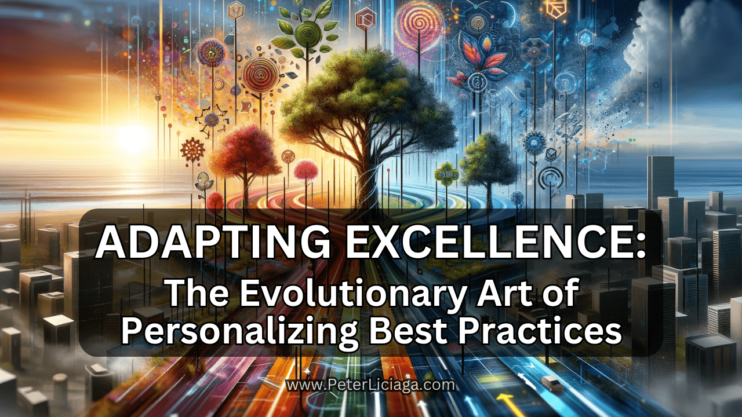Section 2: Beyond One-Size-Fits-All: The Dynamic Nature of Best Practices
Introduction
The concept of “best practices” often suggests a universal solution, a set of guidelines or procedures that have been proven effective in various scenarios. However, this view overlooks the critical aspect of their dynamic nature. Best practices are not static; they evolve over time, driven by technological advancements, societal changes, and the unique challenges within individual organizations and personal career paths.
The Evolution Driven by Technology
Technological leaps, from the internet to artificial intelligence, have transformed organizational operations and competition, necessitating the evolution of best practices. For example, data management has shifted to sophisticated analytics, and manufacturing has integrated IoT for more efficient supply chain management.
Societal Changes Reshaping Practices
Societal shifts, like the rise of digital marketing and environmental sustainability, have also redefined what constitutes best practices, reflecting changes in consumer behavior, global economics, and cultural trends.
Adaptation to Organizational Contexts
Best practices must be adapted to fit each organization’s unique context, influenced by its industry, size, culture, and specific challenges. This adaptation varies from structured processes in large corporations to agile methodologies in startups.
Considering the Entrepreneur and Individual Employee
For entrepreneurs and individual employees, adapting best practices becomes a personal endeavor. Entrepreneurs must align these practices with their specific goals and resources, customizing time management, financial planning, and client relations strategies to fit their operations. Networking and collaboration are also key for expanding their capabilities.
Individual employees need to integrate best practices into their career development, selecting learning areas that align with their career goals and adapting work processes to their personal style and work-life balance. Embracing innovation and initiative can help them contribute more effectively to their organizations.
The Importance of Flexibility and Innovation
Flexibility in changing processes and innovation in developing new practices are crucial for staying relevant and competitive. This involves being open to adapting existing practices and creating new ones to suit specific goals and contexts.
Continuous Learning and Evolution
Embracing a mindset of continuous learning and evolution is vital. Regular benchmarking, staying abreast of trends, and being receptive to feedback are essential for adapting best practices effectively.
Embracing a Growth Mindset
Both entrepreneurs and individual employees benefit from a growth mindset, characterized by openness to learning, resilience, and a proactive approach to applying best practices innovatively.
Conclusion
Best practices should be viewed as a starting point, adaptable to the ever-changing technological landscape, societal norms, and specific organizational contexts. For entrepreneurs and individual employees, these practices are tools for crafting their unique paths to success, emphasizing the versatility and adaptability of best practices in their professional endeavors.




